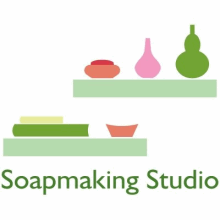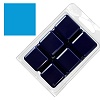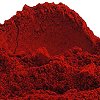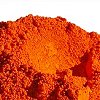
Colorants for soap and cosmetic products from the Soapmaking Studio in San Diego County, CA.
These colorants for use in soap and cosmetics and other soapmaking supplies may be shipped or picked up from the Soapmaking Studio location. Select either "Standard Shipping" or free "Store Pickup" during checkout. Pick up items during store hours or arrange a special pick up appointment time by calling the Soapmaking Studio: (619) 668-1435.


Block colors for coloring melt and pour soap bases are cosmetic-grade and low-fade. Depending on the temperature when poured and storage conditions, over time, block colors may bleed or migrate. Transparent "stained glass" block colors will color clear melt and pour soap and maintain the clarity of the soap, like colored glass. Different block colors contain different ingredients, such as natural mineral colors and mica colors, that have been prepared in concentrated amounts in melt and pour base. It is very easy to use them with melt and pour base; simply cut off a small piece or chip and allow it to melt in the warm soap.


Lake colors are water dispersible; use lake colors in water-based or clear products, such as melt and pour soap, liquid soap, lotion, bath salts, bath fizzies, and bath bombs. Lake colors are derived from natural minerals and salts, and include a category number because they have been certified as meeting the quality and safety requirements set by the Food, Drug, and Cosmetic Act of 1938. Lake colors excel in bath products, such as bath salts and bath bombs because they disperse easily in water, enough to color the water if desired, but do not stain or remain gritty in the bottom of the bathtub. Unfortunately, there are no green nor purple lake colors because they are not approved by the FDA for use in cosmetic. The only lake colors approved for use in cosmetics are blue 1 lake, red 40 lake, and yellow 5 lake. Luckily, it is easy to combine these primary colors to create other colors. Lake colors are considered one of the safest colorants in cosmetics, were approved for use as early as 1969, and are approved for all general cosmetic applications, including eyes and lips. Lake colors are damaged by the alkalinity of cold process soap.


Mica colors are powdered pigments derived from natural minerals, such as chromium, iron, titanium, and zinc. In addition to these mineral, mica colors also contain mica, which is a naturally sparkly mineral that reflects light and is sometimes referred to as "nature's glitter." Mica colors will reflect light when light can travel through a clear product to the mica, such as in clear melt and pour; they cannot reflect light and will not sparkle in an opaque product, such as CP soap. Many years ago, the color component in mica powder was D&C colors, which cannot survive the alkalinity of cold process soapmaking, so the micas of yesteryear performed poorly. The color component in these mica powders is natural minerals that easily withstands cold processing unharmed. During cold process soapmaking, these micas may temporarily morph to a different color but always return to their original shade after 24 hours—by the time the soap is removed from the mold. For example, the bright yellow mica transforms to a deep brownish-orange in highly alkaline cold process soap, but reverts back to bright yellow by the time the soap is removed from the mold the next day.


Mineral colors are powdered pigments derived from natural minerals, such as chromium, iron, titanium, and zinc. Because they are powdered minerals, mineral colors are safe for the environment, wildlife, soil, and aquatic ecosystems. Mineral colors can withstand exposure to extreme alkalinity, such as in cold process soapmaking, without being damaged. They are frequently used as the colorant in powdered mineral makeup and pressed eye shadow and face powder cakes. Titanium dioxide is approved as a physical sunscreen in mineral-based sunblock. These mineral colors may also be used in lotions to create tinted sunblock and foundation makeup.


Neon colors are a fun way to bring new visual interest to products. These trendy neon colors stand up to the alkalinity of cold process soap. These FDA approved neon colors also excel in lotions, bath products, scrubs, and nail products. Try a contrasting neon color to accentuate a natural mineral color and elevate your products to a higher level of artistry.
View soapmaking classes, the schedule, or store hours.
Classes are held at a private home occupied by a pet cat. If you are allergic to cats, please contact info@soapmakingstudio.com prior to enrolling in a class.